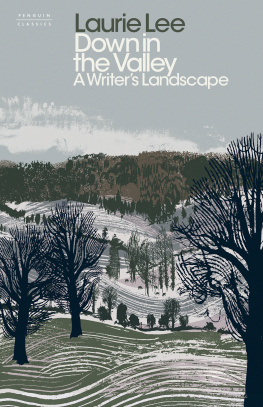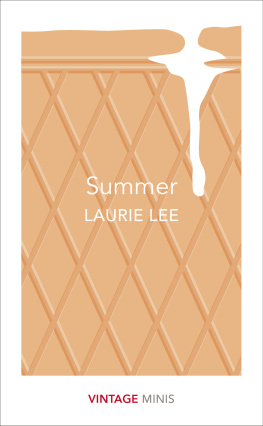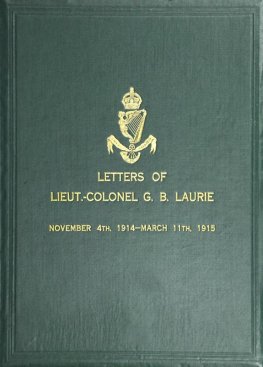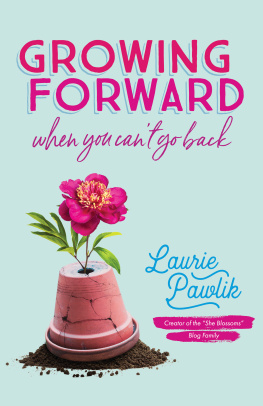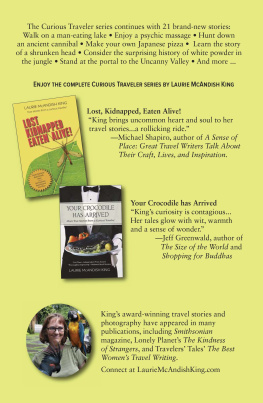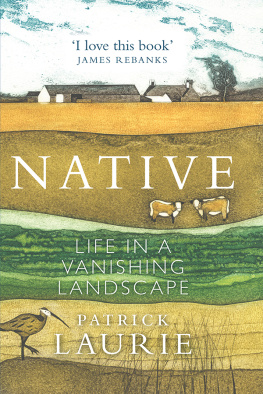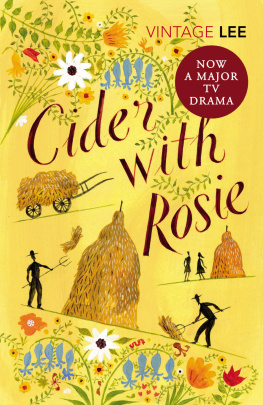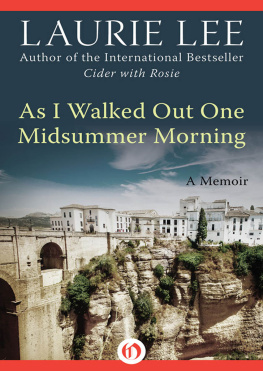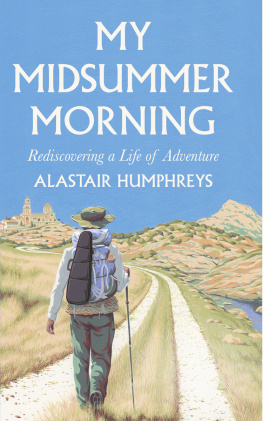

Laurie Lee
Down in the Valley
A Writers Landscape
Edited by David Parker

Contents
About the Authors
Laurie Lee has written some of the best-loved travel books in the English language. Born in Stroud, Gloucestershire, in 1914, he was educated at Slad village school and Stroud Central School. At the age of nineteen he walked to London and then travelled on foot through Spain, where he was trapped by the outbreak of the Civil War. He later returned by crossing the Pyrenees, as he recounted in A Moment of War.
Laurie Lee published four collections of poems: The Sun My Monument (1944), The Bloom of Candles (1947), My Many-Coated Man (1955) and Pocket Poems (1960). His other works include The Voyage of Magellan (1948), The Firstborn (1964), I Cant Stay Long (1975), and Two Women (1983). He also wrote three bestselling volumes of autobiography: Cider with Rosie (1959), which has sold over six million copies worldwide, As I Walked Out One Midsummer Morning (1969) and A Moment of War (1991).
David Parker was born in Stoke on Trent. He is a television programme maker and author. His work for television includes many films about aspects of life in twentieth-century Britain. He is the author of two books about Exmoor and is currently working on one about the Second World War and one about Britains steam railway revival. He lives in Bristol.
For Wendy

1
The Village Pond
This is our village pond, its on the edge of Slad, down at the bottom of the village. It was where we kids gathered for fun, games and secrecy.
This was our kingdom, the centre of all our juvenile recreations: summer bathing, winter skating and general gathering together to experiment with the first pulsations of sensual enjoyments.
We called it Squire Joness pond. The squire glorified in having this ancestral, almost feudal possession of this place but he never checked on us, and we could do whatever we wished. Since then its had some posts and fencing put up to keep people out but we dont take any notice of them. These fences were put in by quite a nice man but the previous owner put up the sort of wire that went round it like the Berlin Wall and the villagers used to come down in the night with big wire cutters. So that didnt endure for very long. Its still a free gathering place. Its inhabited by coots and moorhens and dabchicks.
I dont remember ever coming down and looking at a dabchick. But the coots were very close, bosom chums of mine. We used to spend many a happy hour together. These are the sort of things I remember and we still come down here. In the summer there are great flotations of pink lilies. They are a month behind this year. Arent we all! But theyll be out by the end of June and theyre just like great stars of pink candle wax, floating on the water.
It was at the village pond where almost everything happened in terms of games, village gossip, childish errors. It was a teeming little paradise of wildlife and very few people except we kids came here and I think we were tolerated by the wildlife because they, and the horses in the field, it was the only life they knew. They got used to us. In summer wed swim, and in winter skate and fall through the ice, chase each other, steal the moorhens eggs, get attacked by the swans. And they are pretty difficult to cope with when you are a kid, because they have these huge wings and they would come like Concorde taking off. Theyd come across us and bash into us and we used to scream and jump into the hedges.
There was one macabre, dramatic occasion that took place at this pond. The milkman, Fred Bates, the young man bringing the milk up to our cottage, one morning was late. One of my sisters asked him:
What kept you, Fred Bates, what happened?
And he said, I seen her.
Who?
Miss Flynn.
What happened to her? my sister asked.
Well, I was coming past the pond and there was what looked like a dead swan, I thought thats a dead swan and went over and had a look at it, and it was Miss Flynn. She was looking up at me with her eyes wide open and her hair all loose. And there was not a stitch on her, and she was drowned. And I dropped me bucket and I ran up here.
And my sister said, Youd better have a cup of tea.
Well, Ive had about five already.
Because hed been telling the story all round the village. So he became a bit of a hero. But we came down here and the women were gathered around the pond; the village women whod heard the story. Theyd already taken her body away on a hurdle, and there was a sheen of milk still on the pond where Fred had dropped his churn. And I remember thinking as the women were chatting between themselves, Miss Flynn, poor Miss Flynn, you wouldnt think, I only saw her a couple of days ago, she was down in Stroud in the Home and Colonial and she said to me and I said good morning Miss Flynn and she said good morning like she often does
And I thought, all this talk, is this what happens when you die? Do they say, I saw you in the Home and Colonial? Miss Flynn was a sort of Gabriel Rossetti heroine, a tragic young girl. I never understood what was behind it all but I do remember thinking I was about eight at the time thats where Miss Flynn came down in the night, lay down in the pond and pulled the water over her head, and drowned.
But I think that this place would appeal, I didnt realize it then, it would appeal to all the Victorian painters with Ophelias. Everywhere you went there were Ophelias floating by, covered with wild flowers. And if it wasnt Ophelia it was Edna or Bertha or possibly Rosie. And it all centred on this little pond. Though its not so little now. Were better off for a village pond than many villages round here. Anyway, its a gathering place and I come back here continuously, to refresh myself.
It isnt a natural pond; its a millpond, built in order to run one of the mills across the road, across the lane here. There used to be about eight mills, all with banked-up ponds. The stream runs over there, to get enough head, enough power, to turn the mills wheels. At one end is a dam, it used to be built up. The stream which runs past the pond would have been dammed up to about six feet. This water in the pond would have been held in order to feed the mill, the cloth mill, which is just down the bank there, Steanbridge mill. The whole of this valley was a series of stepping stones of cloth mills, run off these streams, but youll find there were stockades and dams of water all along the valleys and this is one of the few left. The others were washed away in a great cloudburst, a flood, in about 1860. They were all just swept off the face of the earth, but this one still remains, thank goodness. It remains as a legacy. We were spared. Lloyds are still paying for it but how grateful we are for it, because there is nothing up in Slad village itself that is more liquified than The Woolpack inn.
Sheep were grazed on the hills. They would be driven down to this stream and further up theres a sheep wash where they used to have their fleece washed and disinfected. They were then sheared in the early part of the year; the wool taken from them would be put on mule trains that would go down the valley to the weaving mills of Stroud. The Stroud mills were famous for their military scarlet and for their green baize. So they were responsible for not only the snooker player Steve Daviss great victories, because they made the green baize for the billiard tables, but some of the greatest defeats in British military history. When soldiers appeared in the Light Brigade they were all in this scarlet, as if saying to the enemy, Look at me, Im here. So the old Turks just mowed them down, alas. Very sad in those days, but they all wear Raglan coats now, thats the new camouflage.
Next page
